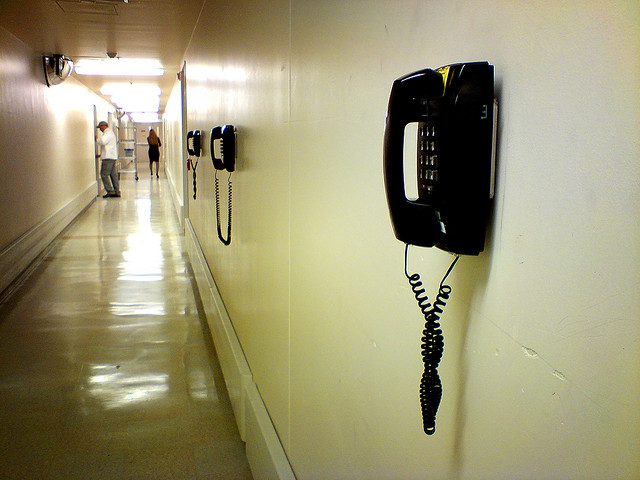
You’ve got diabetes. Maybe also a little asthma. You’ve got a few extra pounds you know you should lose. You gave up smoking. You’re of a certain age. That is, you’re over 65.
 And maybe, in the last few months, you’ve started getting calls from your doctor’s office, following up on your last appointment, making sure you’re taking your medication, checking on your mood.
And maybe, in the last few months, you’ve started getting calls from your doctor’s office, following up on your last appointment, making sure you’re taking your medication, checking on your mood.
Welcome to the world of ACOs (short for accountable care organizations), the latest attempt to save our healthcare system and our economy. How you respond to these calls–whether you end up spending less money on care, whether you avoid extra trips to the hospital, whether your chronic health conditions stabilize and improve–may determine whether ACOs become part of a bona fide solution–or whether they’re just another also-ran in the scrap heap of healthcare reform ideas.
“Our healthcare system is sort of like a big rig going downhill with failing brakes,” says Gerald Kominski, director of the UCLA Center for Health Policy Research. In the ’80s and ’90s, everyone from the Center for Medicare and Medicaid Services (CMS) to healthcare economists to academics thought managed care was going to be the brake on the system. “We wore out the last pair of brakes” with HMOs. “And we don’t know if this new braking system is going to be more effective or not.”
The new braking system, the ACO, was created in 2011 by CMS. An ACO is a formal network of independent doctors, specialists, and hospitals who agree to care for a group of patients for a lump sum.
This is a major departure from how traditional Medicare works. Today, non-ACO doctors are paid on a fee-for-service model that rewards more tests, more screenings, more surgeries, and more treatment, all without proof that they are improving the lives or prognoses of their patients.
“Doctors who do interventions make more money, and doctors who talk to patients get far less money,” Dr. Otis Brawley, chief scientific officer of the American Cancer Society, told a group of healthcare journalists in April. His book, How We Do Harm, delineates the blame, which he spreads out among everyone in the healthcare system, including patients who insist on getting every treatment or test regardless of whether it’s appropriate. “The incentive is for doctors to get patients in and out and not talk to them.” The result: healthcare spending accounts for nearly 18 percent of the U.S. gross domestic product–nearly $8,000 per patient, the most per capita in the world.
The question is whether ACOs can change all that.
Under the ACO model, healthcare providers will be expected to meet both quality and cost targets. They have incentive to do so. If they meet the quality targets, they are eligible for a share of any savings they achieve. The theory is that, in order to provide better care for less, these doctors will shift how they practice, working together with hospitals and patients. Doctors will emphasize preventative care. They will follow up more frequently with patients with more than one chronic condition to make sure patients adhere to their treatments, thereby reducing complications and the need for additional services. They will use electronic medical records to better coordinate between offices and save money. The list goes on.
It’s not yet clear how much healthcare consumers–which is to say, just about everybody–will see and feel this. A lot of things are being shuffled behind the scenes to try to provide higher quality care while curbing the stratospheric growth of healthcare spending in the U.S.
So far, at least 1.1 million of the 45 million Americans covered by Medicare are getting care through ACOs, mostly in areas selected for pilots of the new approach. For most of these patients, the shift to ACOs is invisible. If their current doctor joins one, they’re part of one. Since ACOs don’t penalize patients for going outside the ACO network for care, they may never be aware. If the concept works there–that is, if patients and their providers meet various measures of cost and quality–it’s likely to spread to the rest of us in coming years.
This sort of approach isn’t entirely new. It resembles how Kaiser Permanente is organized, says Mark Pauly, Ph.D., a healthcare management professor at the University of Pennsylvania. Kaiser is a closed system of doctors and insurers who work together to manage your care, prevent some screenings and tests, and do procedures when medical literature indicate they will help.
But Pauly is quick to add that doctors often don’t know what tests are necessary in particular cases. In ACOs, “[CMS] will try to get doctors to provide care based on evidence that it is effective,” he says. “But nothing will be perfect and in many cases the evidence doesn’t exist yet.”
Will ACOs work? The approach makes intuitive sense, and some early results are promising. The Michigan Pioneer ACO was able to reduce hospitalizations and their associated costs and medical complications. An ACO-like demonstration called the Physician Group Practice Demonstration showed that all systems improved quality and many achieved savings; the doctors got bonuses as a result.
But there are already doomsayers. Regina E. Herzlinger, a professor of business administration at Harvard Business School, recently declared in the trade journal Managed Care that “ACOs will implode just as … HMOs did in the 1990s,” when HMOs denied care not because it was medically unnecessary but because they didn’t want to cut into their profit margins.
The problem, she and others argue, is implementation. Herzlinger suspects that inefficient electronic medical records, the lack of team culture in healthcare, and the vagaries of setting up state insurance exchanges will frustrate attempts to control costs and boost quality. As Dr. Elliott Fisher of Dartmouth College, who coined the term ACO and helped create the model, only halfway joked recently, “They’re the perfect solution. If only we can get them right.”
Getting them right means there’s a lot of pressure both on patients and on the healthcare industry to stop doing unnecessary tests. Getting it right will mean that healthcare providers will have to get on board with the concept. There are as many as 160 ACOs in the U.S. already, but every month a new article comes out with doctors and medical associations claiming that the model has already failed, that’s it’s unrealistic and too confining to attract enough specialists to reach a critical mass. Getting it right will require that ACOs don’t consolidate to the point of becoming monopolies–and that they won’t use their ability to coordinate care with all their providers to fix prices and actually drive up the cost of healthcare.
Providers will have to resist the urge to give less care for less money. Since providers will get a lump sum per patient, they could try to push off their rolls patients whose complicated cases don’t get better with the innovations offered under ACOs.
And of course, the success of ACOs will depend on us–people who may not know they’re even in an ACO. For this to have a chance of working, we will have to stay in the ACO network, follow doctor advice, stop asking for antibiotics for viral infections, and resist the urge to demand the newest, unproven treatment just reported in the newspaper.
“What we’re talking about is collaborative care–doctors collaborating with one another and patients collaborating with doctors,” says Pauly. “I’m not sure Americans are ready for collaborative care.”
Heather Boerner is a healthcare writer based in San Francisco. Find her at www.heatherboerner.com.
*Photo courtesy of Brewcaster.




Send A Letter To the Editors